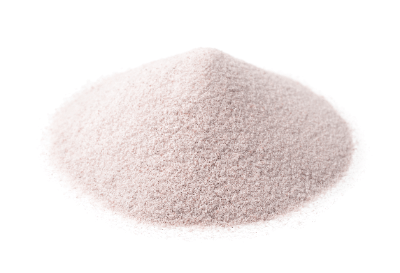What Is Silica Sand?
 Silica Sand is a quartz grain.
Silica Sand is a quartz grain.
It is characterized by its hardness, high refractoriness, and excellent chemical and acid resistance.
Uses of Silica Sand
Silica sand is used in a variety of fields, including construction and processing.
1. Construction
- Construction materials: Mortar aggregates
- Pavement: joints, interlocking, etc.
- Landscaping: Aggregates for soil improvement, aesthetic aggregates, sanitized sand, etc.
- Molding: Aggregates for concrete molding
- Aggregates for casting
- Glass materials
2. Other Fields
- Aggregates for sandblasting
- Water and sewage filtration
- For fluidized beds in cleaning plants
- For roofing
- For paints and coatings
- Joint soil for golf course
- For bunkers
- Principle of Silica Sand
Silica sand is made by rinsing, drying, and classifying quartz grains. These quartz grains are mined from silica stone formations, and the quartz grains are crushed into a granular form. Silica rock formations are formed when acidic rocks such as granite and quartz mottled rock are weathered and disintegrated over a long period of time and transported to and accumulated in rivers and oceans as chemically stable and weather-resistant quartz particles.
Silica sand therefore reflects the characteristics of quartz. It is characterized by its hardness and refractoriness with a high melting point of about 1,680℃. It also has excellent chemical resistance, acid resistance, alkali resistance, weather resistance and abrasion resistance.
Other Information on Silica Sand
1. Characteristics of Silica Sand by Application
Silica sand is used in a variety of fields, but care must be taken when using it as a raw material for glass or as an aggregate for casting.
When used as a raw material for glass, the SiO2 content should be 99.5% or higher. Silica sand contains minerals such as Fe2O3, FeO, Al2O3, CaO, MgO, TiO2, K2O, and Na2O in addition to quartz (SiO2). When used as a raw material for glass, iron causes coloration and reduced light transmittance, so the Fe2O3 content must be regulated.
When used as aggregate for casting, the presence of feldspar or mica can cause problems in baking and other processes. In addition to SiO2, the quality standard for castings specifies the content of Al2O3, CaO, and MgO. In addition, the moisture content of silica sand for casting must also be taken into account.
2. Toxicity of Silica Sand
Silica sand is known to have little effect on the human body when ingested orally. However, inhalation of fine particles of silica sand through the nose or mouth can cause serious symptoms. Inhalation of crystalline silica such as quartz is a cause of silicosis. Collectively, symptoms such as silicosis and asbestos lung caused by inhalation of asbestos are referred to as pneumoconiosis.
Symptoms of pneumoconiosis tend to be subjective at first, but over time symptoms such as cough, phlegm, and even shortness of breath or difficulty breathing may appear. Once pneumoconiosis is contracted, there is no treatment and the lungs never return to normal.
Silica sand is conventionally used in sandblasting, which is a surface finishing process in which sand or other material is blown onto the surface of a material. The impact of the sand blasting causes the silica sand to become finer and more airborne, causing workers to inhale the fine particles of silica sand, which can lead to the development of silicosis.
Therefore, in recent years, silica sand with reduced silica content has been developed for sandblasting and is widely used. To prevent such accidents, the use of protective equipment such as dust masks is usually recommended.